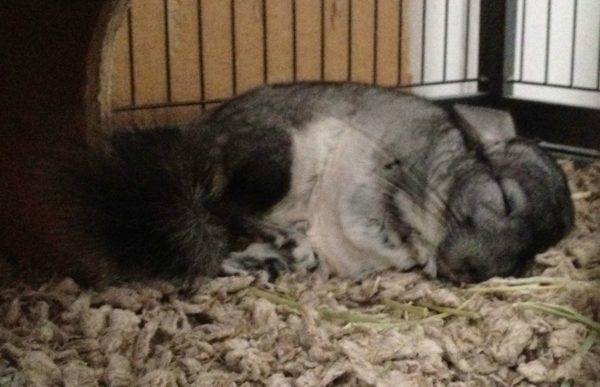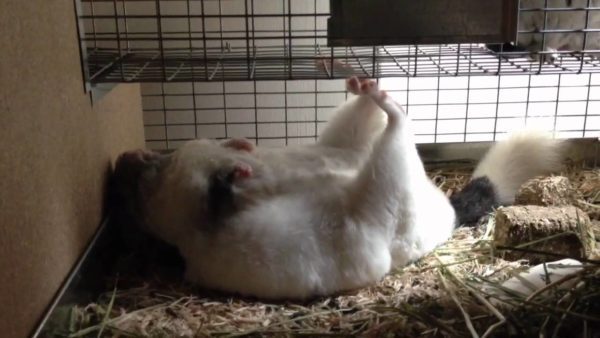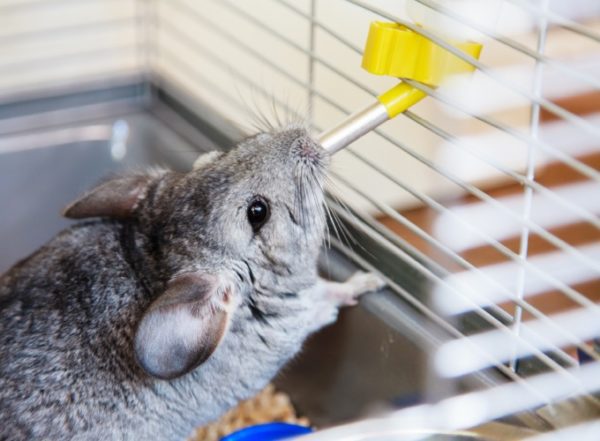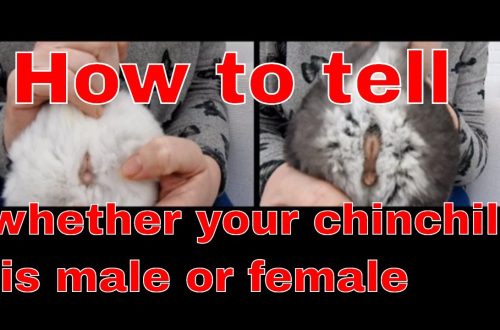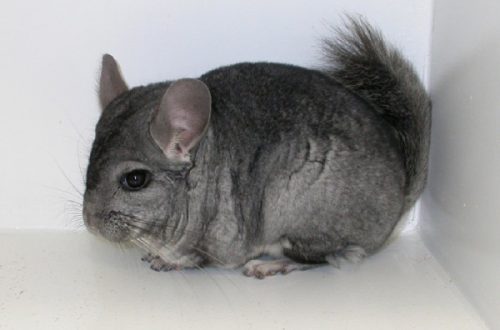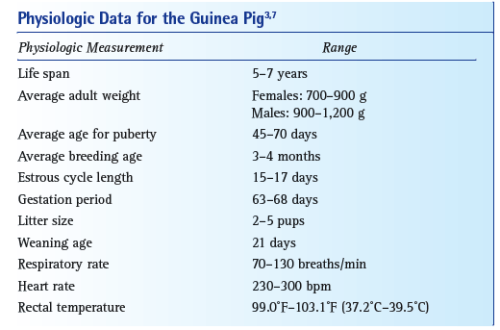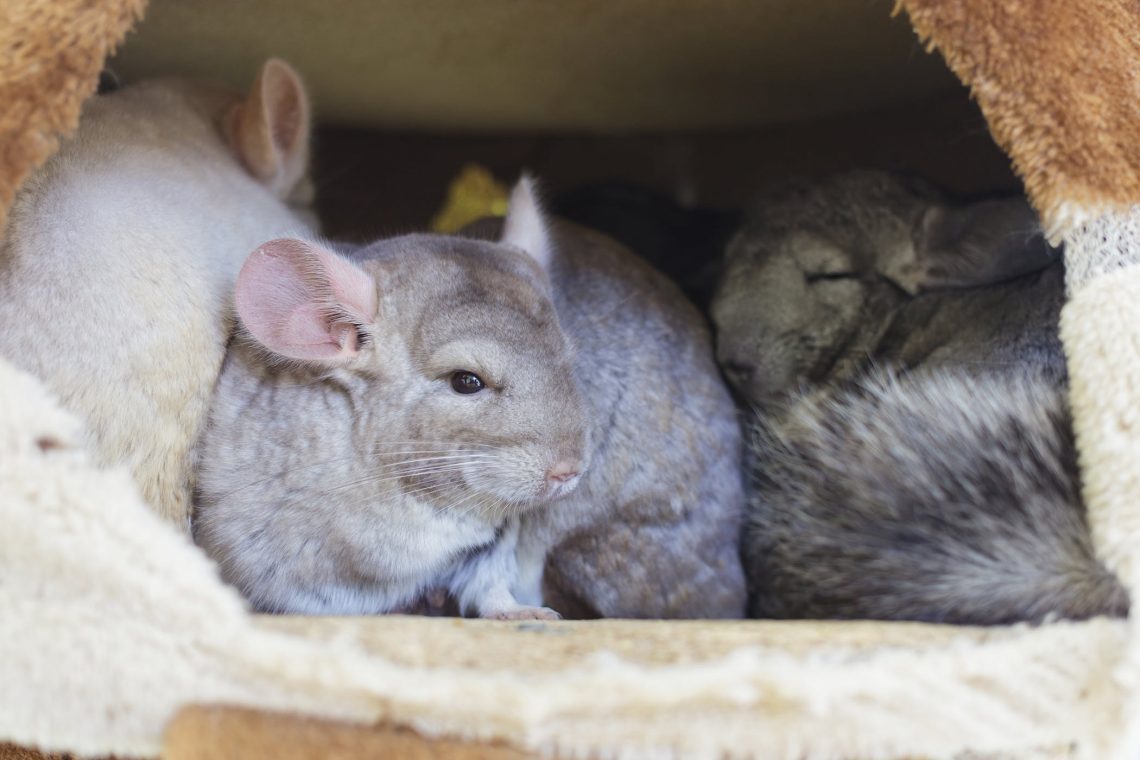
Pregnancy and childbirth of chinchillas: signs, duration, care
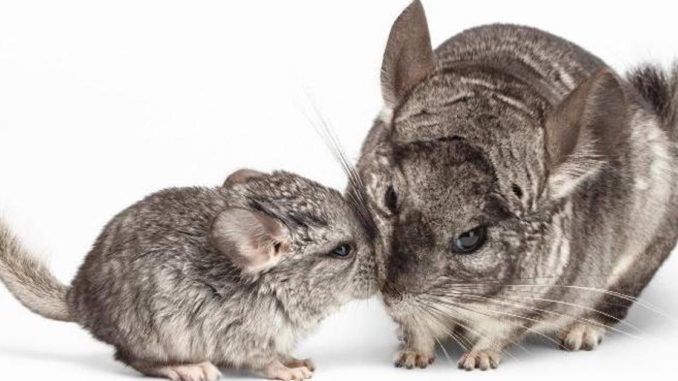
Chinchillas are exotic pets known to most people for their valuable fur, long lifespan, and relatively high cost relative to other common domestic rodents. Many chinchilla breeders fall in love with their pretty animals with huge surprised eyes and soft velvety fur. Sometimes the owners decide to breed outlandish fluffy rodents at home.
Contents
- How to understand that a chinchilla is pregnant
- Characteristic signs of pregnancy in a chinchilla
- Video: how to determine pregnancy in a chinchilla
- How long does a chinchilla pregnancy last?
- How many children do chinchillas have?
- Table of births in chinchillas
- How to care for a pregnant chinchilla
- What to feed a pregnant chinchilla
- Signs and preparation for the approaching birth of a chinchilla
- How do chinchillas give birth
- Video: how chinchillas give birth at home
- How to help a chinchilla during childbirth
- What to do if the chinchilla gave birth to puppies
- What to feed a chinchilla after childbirth
How to understand that a chinchilla is pregnant
For the successful onset of the long-awaited pregnancy of a female chinchilla, the owners of cute rodents must correctly follow the procedure for meeting and planting animals, otherwise the outlandish animals will be belligerent towards each other and mating will not occur.
Sexual maturation
Puberty in big-eyed animals occurs quite early. Conception in females can occur at 3-4 months of age, males are ready for fertilization by 5 months of age.
Early pregnancy in females provokes:
- weakening of the body;
- pathological course of pregnancy and childbirth;
- miscarriages or death of chinchilla offspring.
Therefore, healthy well-fed animals with a body weight of at least 500 g at the age of 7-9 months for females and from 6 months for males are allowed to sit down.
Experts do not recommend planting females before they reach 12 months. Pregnancy before this age provokes a stop in the growth of the skeleton and weight gain of the female, which has an extremely negative effect on the health of the fluffy animal and its offspring, which most often have to be supplemented with artificial mixtures.
Definition of pregnancy
Finding out that a chinchilla is pregnant at an early stage is quite difficult. For mating, animals choose night time, and the owner can skip this process. 12 hours after intercourse, a cork from the dried seminal fluid of the male is released from the female’s vagina. The detection of tufts of fluff and a vaginal plug in the litter in the cage, in the form of a small white paraffin cord about 2 cm in length, can serve as indirect evidence of rodent mating. In primiparous or recent females, the cork may be absent.

If the owner notices the appearance of vaginal plugs in the cage for several days in a row, one can objectively judge the successful conception that has occurred and prepare to replenish the fluffy family. A reliable sign of the onset of a long-awaited pregnancy is the absence of another estrus within 30 days in a female chinchilla, which is manifested by swelling and discoloration of the external genital organs of a female.
Even a novice breeder can accurately determine pregnancy by changes in weight and behavior from the 8th week of pregnancy of the female. Pregnancy is called the period of pregnancy of chinchillas, which lasts 105-115 days.
Characteristic signs of pregnancy in a chinchilla
Changing the appearance of the nipples
A non-pregnant female has light small papillae that cannot be found on the abdomen of a fluffy pet, and the nipples of a pregnant chinchilla from 5-6 weeks of pregnancy increase quite strongly in size, swell, rise above the skin and turn red. Before childbirth, the production and release of colostrum is observed. Which cover the nipples of a pregnant female with a white and shiny coating.
Increase in rodent appetite
A pregnant female drinks and eats more often, water, protein and trace elements are necessary for laying all organ systems of developing fetuses.
Animal weight gain
A pregnant female begins to noticeably recover from the 8th week of pregnancy, the female adds about 10-15 g weekly. It is recommended that the owner of a pregnant female carry out control weighing of the animal on a certain day of each week of pregnancy. Weekly weight gain must be recorded in writing or electronically to monitor the successful progress of the chinchilla’s pregnancy.
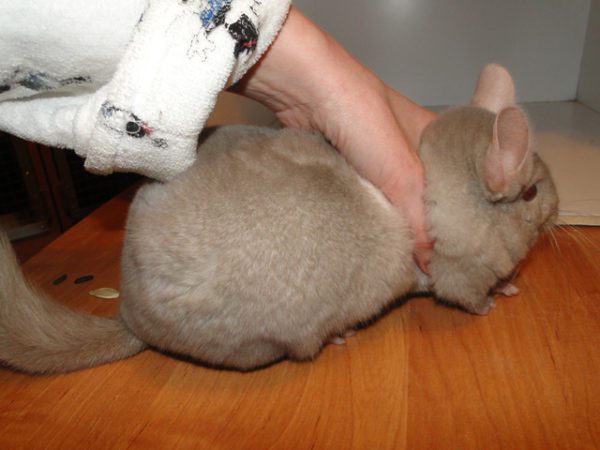
It is highly not recommended to take a female mother by the tail for weighing in order to exclude the occurrence of premature birth. 14 days before the expected date of birth, the weighing of the female is stopped, a stressful situation against the background of increased hormone production can provoke a miscarriage in a chinchilla.
Increased urination
Due to the pressure of the enlarging uterus on the bladder and intestines.
Change in the behavior of a pregnant female
The activity of the baby chinchillas noticeably decreases, the chinchillas become calmer and more affectionate towards their owners. Females try to sleep on their side, in late pregnancy the fruits increase greatly in size and the female often lies on her back or barrels during the day. Before giving birth, the animal becomes restless, begins to be aggressive towards the male and is frightened by sharp sounds.
Enlargement of the abdomen
In the later stages of a multiple pregnancy, you can see with the naked eye the active movements of the fetus in the enlarged rounded belly of the expectant mother. After 90 days of pregnancy, large fruits are well felt in the dense and elastic abdomen of the rodent, it is undesirable for the owners of the chinchilla to carry out such a procedure on their own in order to avoid miscarriages.
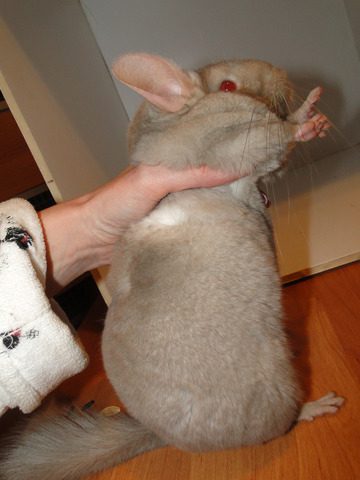
Loop change
Shortly before giving birth, the external genitalia of the baby chinchilla enlarge, swell and turn red. The male perceives this state of the female during the hunting period and can cover the female, which is fraught with injury to the pregnant female, her fetuses, or the occurrence of premature birth. Two weeks before the upcoming birth, it is necessary to transfer the male to another cage for 5-6 months.
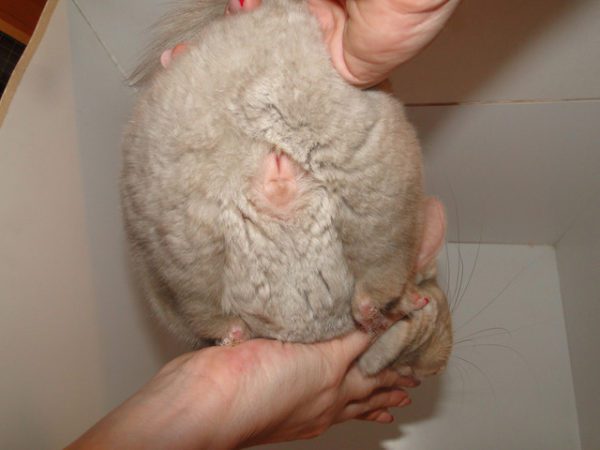
Ultrasound diagnostics and radiography
Ultrasound and radiography are considered the most accurate methods for confirming and examining a pregnant female. Ultrasound diagnostics is important for confirming the fact of pregnancy in a chinchilla, and an X-ray examination performed at late stages of pregnancy during ossification of the skulls makes it possible to determine how many fetuses the female bears and their presentation. If you have any doubts about the successful course of pregnancy, you should consult a veterinarian; it is highly not recommended to prescribe medicines to the female on her own.
Pregnancy of chinchillas under decent conditions of feeding and keeping most often proceeds safely, but the owner must be prepared for the pathologies of the rodent’s pregnancy in order to provide emergency care.
If purulent or bloody discharge appears from the loop of a pregnant female, poor appetite or a decrease in weight gain, it is recommended to urgently take the animal to a veterinary clinic, a specialist will prescribe drugs to maintain pregnancy or perform an emergency caesarean section to save the life of the female.
Video: how to determine pregnancy in a chinchilla
How long does a chinchilla pregnancy last?
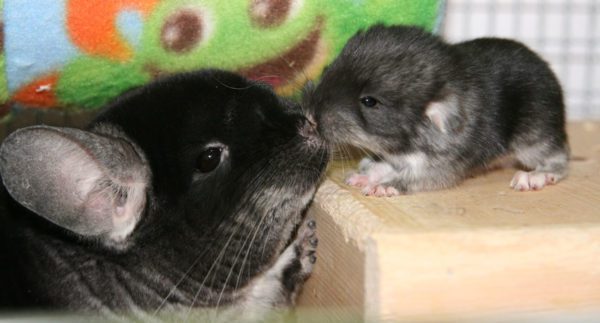
The average pregnancy of a chinchilla is 110-115 days., the gestational age directly depends on:
- the large number of offspring that the chinchilla bears;
- breed variety;
- individual special female.
If the female bears one cub, pregnancy can last about 115-120 days. With a multiple litter, pregnant chinchillas walk for about 105 days. Babies are born blind prematurely with a naked belly and a small weight, which babies successfully gain through breastfeeding or artificial feeding during the first days of life.
Chinchillas live for about 18 years, under decent conditions, animals can live up to 25-28 years, animals up to 15 years of age can become pregnant and successfully bear offspring.
Without harm to health, females can bring 2 litters per year, a week before giving birth, the male should be transplanted for a sufficiently long period of time so that the mother chinchilla can restore her health after prolonged pregnancy and feeding the cubs. A female chinchilla is able to become pregnant a day after giving birth, which can have a detrimental effect on the feeding of newborn chinchillas, the course of pregnancy and the next birth. Against the background of a hormonal failure caused by a new pregnancy, the animal can bite the newly born offspring.
How many children do chinchillas have?
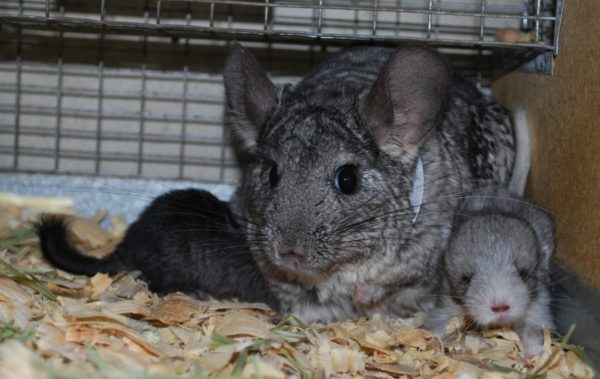
Anatomically, the chinchilla has 3 pairs of nipples, but only one active pair is intended for feeding the cubs, 4 nipples very rarely produce milk, so most often the female chinchilla gives birth to 1-3 puppies. Adult individuals bring numerous broods numbering about 4-6 cubs. In this case, there is a danger of the death of weak chinchillas, which are deprived of mother’s milk by nimble and healthy brothers. If a chinchilla gives birth to more than three puppies, artificial feeding of newborn babies with infant formula falls on the shoulders of the owner of furry animals.
Table of births in chinchillas
To facilitate the calculation of the day of the expected birth from the date of conception, there is a simple table of pregnancy and childbirth in chinchillas, which contains the average gestation period of exotic rodents with an error. The error of the table is from 1 to 4 days due to the lack of a clear gestational age in female chinchillas. The table consists of longitudinal columns, the top line of which corresponds to the calendar date of mating, and the bottom line to the expected day of the upcoming birth. For example, with a successful conception on June 1, the breeder should expect fluffy offspring around September 19.
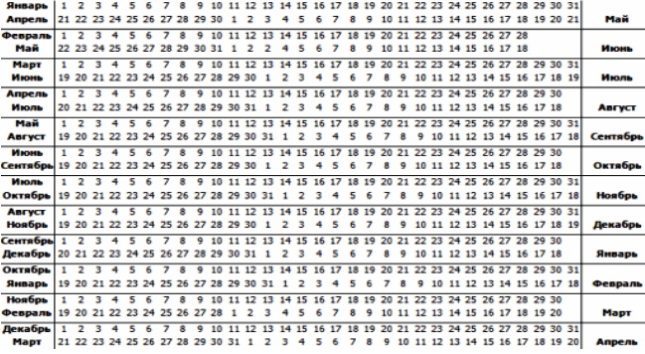
How to care for a pregnant chinchilla
The owner of a sucrose shishilla is recommended to create calm, comfortable conditions for successful pregnancy and successful delivery:
- a female during gestation (pregnancy) must be protected from harsh sounds, loud noise, bright light, experts advise observing the silence mode in the room where the fluffy animal is kept;
- the aviary of the female specimen must be freed from shelves, ladders, toys in order to avoid injury to the pregnant chinchilla;
- during the gestation period, it is advisable not to take a chinchilla in your arms once again, not to let it go for a walk. If necessary, the female is taken out of the enclosure, gently bringing a hand under the elastic tummy and calming the rodent with affectionate words. Lifting an animal by the tail can greatly frighten the expectant mother, which is fraught with sad consequences;
- the male must be deposited 2-3 weeks before birth in a separate enclosure out of sight of the female in order to avoid covering a pregnant or just giving birth female. If possible, the male can be deposited for the entire gestation period;
- in late pregnancy, an X-ray examination is recommended, which is contraindicated in overly shy and restless individuals;
- to warm the floor, it is recommended to use fresh dry soft hay or high-quality wood filler as bedding; cleaning in the aviary or cage of the female should be done daily.
What to feed a pregnant chinchilla
The mother chinchilla female must be provided with high-calorie foods with an increased content of protein, vitamins and trace elements for the successful course of a long pregnancy, successful delivery and feeding of newborn babies. It is not recommended to feed the rodent due to the risk of obesity and pathological births. In the diet of a pregnant female, the content of hay, straw and corn is reduced, most of the feed is protein products and fresh vegetables, fruits, and berries.
The owner of a pregnant chinchilla must carefully monitor the change and fullness of the drinker with clean drinking water. The animal “in an interesting position” drinks a lot, water is a necessary resource for the female and her fetuses during the entire period of pregnancy.
The diet of the mother female consists of the same cereals, combined feeds, vegetables, berries, herbs and fruits that are fed to all chinchillas, it is mandatory during pregnancy to use the following products in feeding the animal:
- germinated grain of wheat, oats and barley – a source of female vitamin E, the action of which is aimed at maintaining the reproductive function of the animal’s body. The lack of vitamin E during the pregnancy of a chinchilla leads to the occurrence of pathologies in the fetus and the pathological course of pregnancy;
- products that improve milk production – nettle and alfalfa grass, sunflower seeds, rose hips, strawberry leaves, oatmeal, nuts, berries, fruits;
- feed of animal origin – cottage cheese, skimmed or powdered milk, kefir, yogurt, yogurt, meat and bone meal, milk granules, as sources of protein necessary for fruit development;
- vitamins for chinchillas in the form of mineral salt stones or rings, perga;
- calcium for the formation of bone tissue of future cubs, the female is fed with food 1 time per day ¼ of a calcium gluconate tablet;
- small slice of apple feed once a day 14-20 days before giving birth to the female – a source of iron and essential vitamins.
It is forbidden to feed a pregnant female with thyme grass, lemon balm and mint, cabbage, potatoes, beets, citrus fruits, eggs, bread and poisonous herbs.
Signs and preparation for the approaching birth of a chinchilla
A chinchilla breeder who breeds exotic rodents at home needs to prepare in advance for the upcoming birth of a chinchilla.
Preparing for childbirth
A novice breeder, after determining the mating day, must:
- Mark the approximate date of birth on the calendar by calculating it according to the table or adding 105-115 days to the date of conception.
- 20 days before the date of birth, it is necessary to resettle the male, in some cases, 3 weeks before the birth, the sucrose chinchilla is placed in a cage for hamsters or guinea pigs, which is convenient with a small distance between the rods to prevent leg fractures in newborns. In the cage for the female there should be a bath, a tray, a feeder and a drinker. The sand bath is removed 5 days before delivery to avoid infection of the birth canal.
- Immediately before childbirth, it is advisable to cover the nest with a dark cloth to create a calmly comfortable atmosphere for the female.
- By the time the birth of chinchillas approaches, the owner of the chinchilla should have a solution of hydrogen peroxide, gamavit, a solution of glucose and ascorbic acid, oxytocin, etamsylate, dicynon, injectable calcium gluconate, clean diapers and napkins, disposable sterile syringes, saline, milk replacer, electric fire for nest house heating. The drinking bowl must be completely filled with clean drinking water.
- It is necessary to agree in advance with a veterinary specialist on the provision of obstetric care, if necessary.
Signs of approaching labor
- shortly before giving birth, the chinchilla behaves very restlessly, is frightened of any sound, begins to attack the male if he has not been transferred to another enclosure. It is necessary to exclude all stressful situations, a frightened female may start giving birth ahead of schedule or eat her cub;
- 2-4 days before the birth, the mother female diligently begins to build a nest. The animal gnaws the straw to a soft consistency, plucks the fluff from the abdomen and insulates the corner of the cage or the nesting house with fluff and straw. The nesting house must be installed on the floor in the pet’s enclosure with the hole up so that the female cannot throw out the warm bedding from it. If the female does not insulate the nest on its own, the owner must himself put straw, hay and fluff in the nest box;
- before childbirth, the animal does not move much, practically all the time lies on its back or on its side, you should not disturb and disturb the exotic animal in this state;

Because of the tummy, the chinchilla sleeps on its side - 2-4 days before the birth, the female stretches or bends her back, spreads along the floor, such exercises move the puppies towards the birth canal;
- when the cubs are in the pelvis, the appearance of the chinchilla changes: the rounded belly goes down as much as possible, the ribs retract, the loop becomes red and swollen;

Promotion of fetuses through the birth canal - Immediately before childbirth, females experience a weight loss of up to 25 grams and a decrease in rectal body temperature by 1–1.2 C.
Video: prenatal contractions in a chinchilla
How do chinchillas give birth
Beginning chinchilla breeders are afraid to miss the moment of childbirth with their beloved pet, and often ask on veterinary forums: “How to understand that a chinchilla is giving birth?”. Immediately before giving birth, a pregnant chinchilla completely refuses to eat, becomes restless, and often corrects the nest. In the process of giving birth, the animal loses a huge amount of water. The drinking bowl must be completely filled with clean drinking water so that the chinchilla does not bite its cub, replenishing the lost fluid. The cage where the pet will give birth should have a minimum distance between the bars and be installed in a warm, dry, dark place.
1-3 days before delivery, training contractions are observed, the so-called “false childbirth”, which prepare the body of the mother female for the birth of puppies. The animal stands on its hind legs, stretches out, one can observe retraction of the sides and contraction of the abdominal muscles, after which the rodent lies on its back or side.
Healthy chinchillas give birth without assistance. Childbirth takes place early in the morning at 5-7 o’clock, proceeds quickly enough, the whole process takes no more than 2 hours.
Most often, 1-3 sighted puppies covered with wool are born. During childbirth, the female stands on her hind legs, tightens her stomach and pushes the cub out. Following the chinchilla comes the placenta, which the animal eats at the end of the process of giving birth to babies.
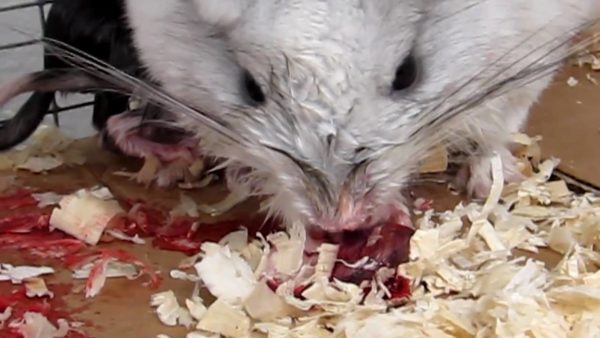
Chinchilla licks the cubs and feeds the puppies. After that, newborn babies hide under their mother’s belly until their fur dries.
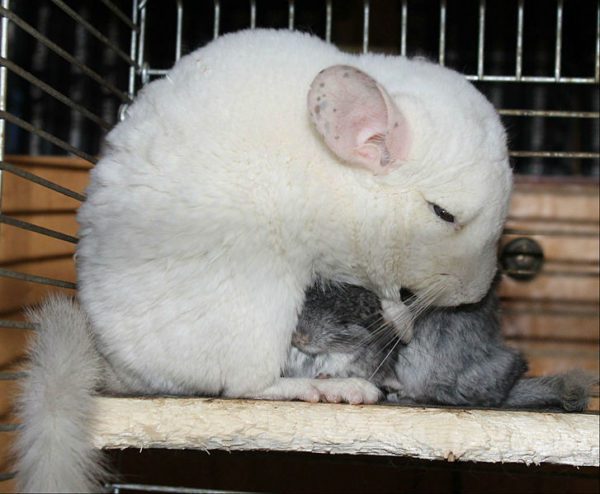
Immediately after childbirth, the giving birth individual produces colostrum, milk arrives within 3-5 days after childbirth.
If a chinchilla gave birth to a dead puppy, it is advisable to remove the body of the newborn from the cage as soon as possible, the sight of an inanimate cub, especially in the case of an infertile pregnancy, is a huge stress for the chinchilla mother.
The female needs to pierce the course with vitamin and lactation suppressants. The birth of a dead calf may be due to trauma, age, disease, insufficient feeding and the individual characteristics of the female.
Video: how chinchillas give birth at home
How to help a chinchilla during childbirth
With a successful course of childbirth, you should not interfere in the process in order to avoid uterine spasm and the death of the female individual along with the cubs.
Pathological births are observed:
- with early introduction of rodents;
- incorrect presentation of fruits;
- in injured females;
- when receiving from the animal more than 2 litters per year.
If the chinchilla cannot give birth, and the birth process lasts more than 2 hours, and the cubs are not born, you can drink thick sugar syrup to your pet and lightly massage the stomach, gently moving the fetus to the exit from the pelvis. If a third of the fetus came out and got stuck, it is necessary to lubricate the newborn with vaseline oil and carefully remove the baby from the birth canal in time with contractions and attempts, turning the baby’s body clockwise.
Childbirth lasting more than 5 hours, with profuse bleeding from the genital tract, loss of strength or severe anxiety with groans in the animal, an emergency caesarean section is necessary to save the life of the female mother and her brood.
What to do if the chinchilla gave birth to puppies
If your fluffy pet has finally given birth to wonderful babies, or one cub, you need to take care of restoring the health of the animal after childbirth to create optimally comfortable conditions for the growth of new family members:
- some owners do not seat adult chinchillas after childbirth, this is fraught with another viscous during the day after childbirth. An affectionate female can become aggressive towards the male after giving birth and chase him around the cage, which can cause injury to the fragile limbs of newborn puppies;
- a cage with newborn puppies should have a minimum size between the bars, it is also necessary to remove all the shelves on which a tired chinchilla can hide from the kids;
- the drinker in the cage of newborns should hang as low as possible so that babies can easily reach it, fresh dry stalked hay must be placed daily in an aviary or cage, newborn puppies start eating hay from 2-3 days of their lives;

Don’t forget to keep an eye on the drinker - chinchilla can bathe in the sand when 10-14 days have passed after giving birth, for this, a bath is installed in a cage for a nursing female with babies.
Care of a woman in labor and babies in the first days
After giving birth, a chinchilla must restore lost energy and moisture; for this, there must be clean, cool water and hay in the cage. For the first few days, the female can be drunk with thick sugar syrup and fed with a small slice of apple. With a lack of water, vitamins and trace elements, the female can bite her offspring.
When the female leaves the nest, it is necessary to inspect the cubs with clean hands, remove dead newborns from the cage. The procedure must be carried out with clean hands washed with laundry soap, the smell of toilet soap will scare away the female, she can kill the cubs.
If the chinchilla left some babies on the floor of the cage outside the nest, the owner needs to urgently resuscitate the newborn puppies. They must be dried, warmed and fed with an artificial milk mixture from a pipette. After these measures, the cub is carefully placed in the nest under the side of the mother.
A day after birth, with clean hands, it is necessary to pull out newborn puppies and weigh each of them, normal weight of the baby should be 30-70 grams. Control weighing should be done daily, preferably at the same time.
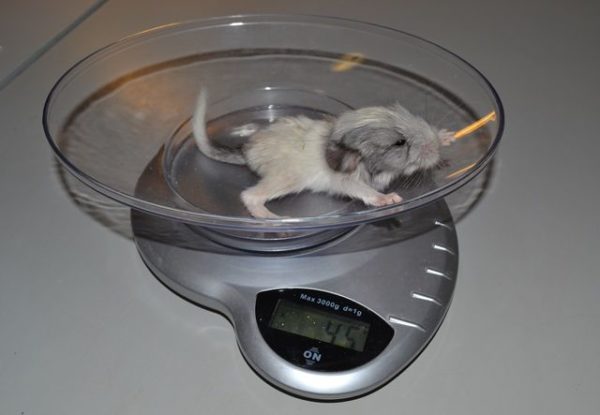
With sufficient production, puppies add at least one gram per day, otherwise it is necessary to supplement the babies.
If the chinchilla does not produce enough milk to feed the brood, which is manifested by the loss of mobility of the babies and the absence of swelling of the mother’s nipples. In this case, the owner of the animals needs to feed newborn puppies with diluted condensed or cow’s milk.
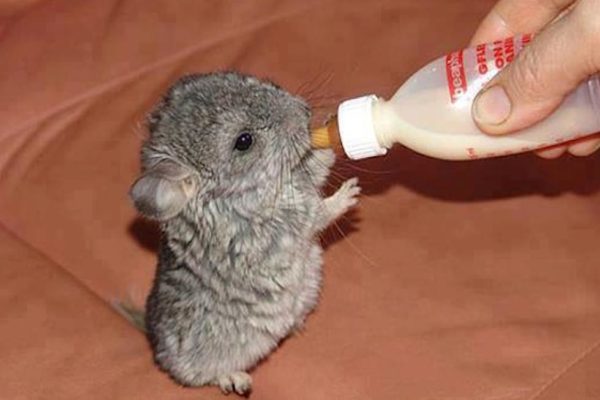
Puppies are weaned from their mother at the age of 30 days into insulated spacious cages, forming groups of different sexes. Young animals need to be fed up to 5-6 months with boiled cow’s milk.
Video: how to save a newborn chinchilla
Examination of the mammary glands
The owner needs to conduct a daily examination of the mammary glands of a nursing chinchilla. Newborn puppies are born with cut teeth and can injure the delicate skin of the nipples. If wounds or cracks in the nipples are found, it is necessary to lubricate the damage sites with vaseline oil or lard. With insufficient milking of the mammary glands or filling the third pair of nipples with milk, the development of mastitis is high. To exclude which, it is necessary to express the remaining milk and use wet dressings on hot swollen glands.
If the female has hardened nipples, she will stomp and scatter the babies. The female is removed from the cage, her papillae are massaged, a small amount of milk is given off and, holding the female, the children are allowed to suck the nipples.
What to feed a chinchilla after childbirth
The diet of a lactating female should contain an increased amount of protein and calcium necessary to produce the required amount of milk. Chinchilla must be fed with germinated grains of wheat, oats and barley, nettle grass, alfalfa, vetch, rose hips, vegetables, fruits and nuts.
It should be mandatory to introduce cottage cheese, skimmed or powdered milk, kefir, yogurt, yogurt, meat and bone meal, milk granules, vitamins, calcium gluconate and berries into the diet.
The production of milk is accompanied by increased thirst in the female, so the owner must vigilantly monitor the fullness of the drinker. It is advisable to hang the feeder and drinker as close to the nest as possible so that it is more convenient for the chinchilla to reach them.
Choosing a pair for mating, caring for a pregnant female and her future offspring, helping with childbirth is a serious and troublesome job, especially for novice chinchilla breeders. But all efforts are more than paid off at the first glance at tiny touching chinchillas, which, unlike other mammalian cubs, are born immediately with soft, delicate fur and open curious eyes.
Signs and duration of pregnancy and childbirth in chinchillas
4 (79.51%) 41 votes



